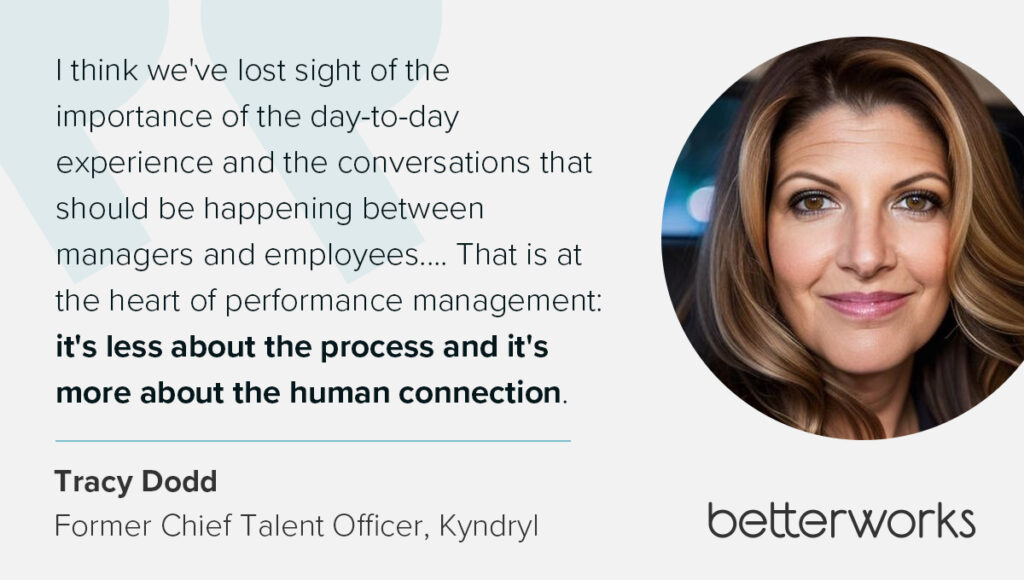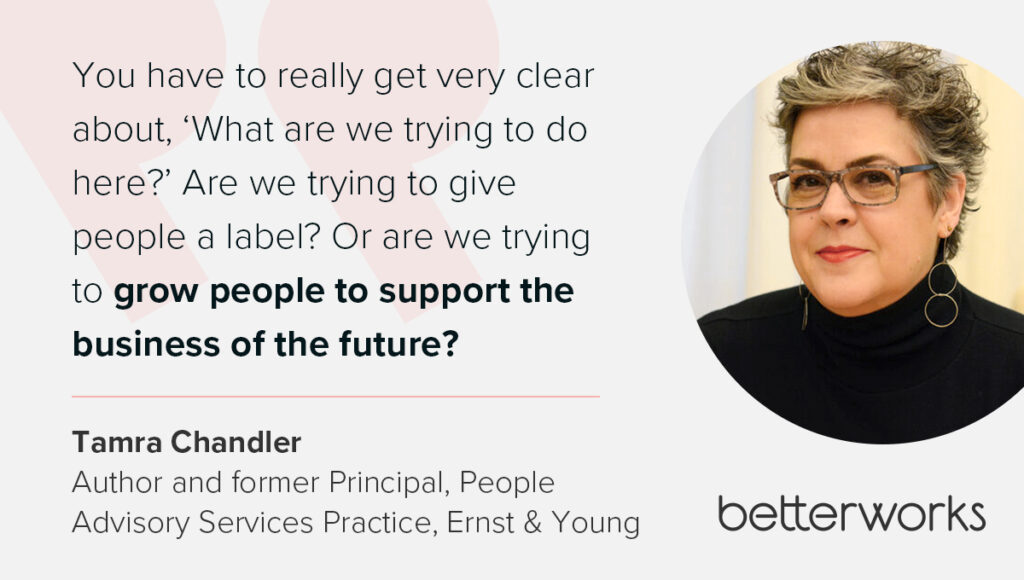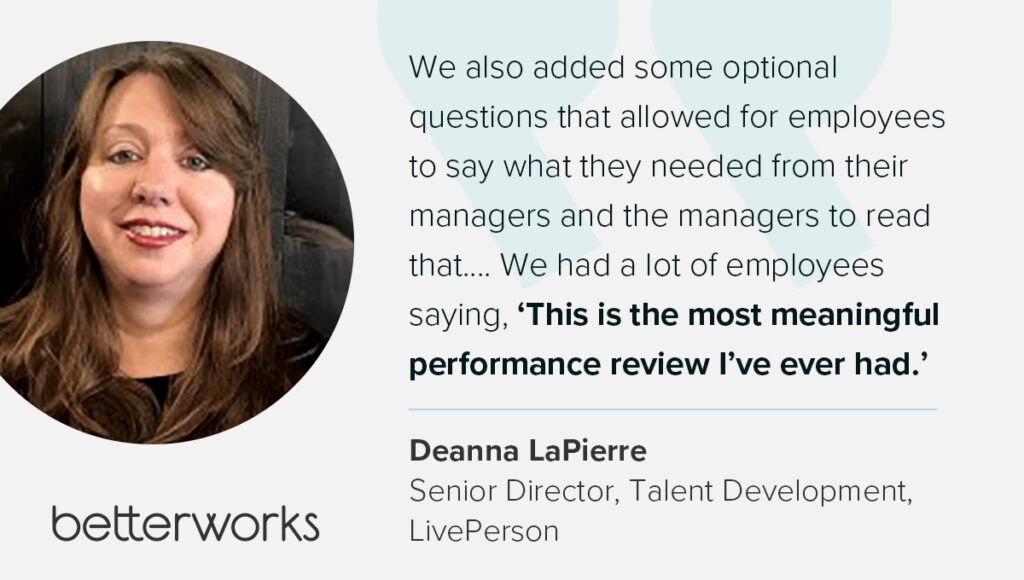What is the state of performance inside organizations? It depends on who you ask. Leaders, including in HR, tend to think they’re doing a great job, that employees have the support they need, and that advanced technology has greatly improved performance management.
But as panelists discussed during our recent webinar “State of Performance Enablement: Bridging the Leadership-Employee Disconnect,” employees don’t feel the same way about the support they are receiving. Managers find these processes to be burdensome and complicated. And the data shows that manual approaches to performance management perform just as well — or even better — than cutting-edge human capital management (HCM) systems.
The message is clear: Companies need to improve performance management and give employees the support and experience that they deserve. But doing so can be difficult because it requires undoing years of habits and assumptions.
“You have to really get very clear about, ‘What are we trying to do here?’” said panelist Tamra Chandler, author and former talent management services lead for the Americas at EY. “Are we trying to give people a label? Or are we trying to grow people to support the business of the future?”
Read on for more insights from Tamra and fellow panelists Tracy Dodd, former chief talent officer at Kyndryl, and Deanna LaPierre, senior director, talent development, at LivePerson. You can also listen to key excerpts from the webinar on our People Fundamentals podcast.
Subscribe wherever you listen to podcasts: Apple Podcasts | Spotify | YouTube Music
Make performance management less burdensome for managers
Managers are crucial to effective performance management and employee support, but they’re often burdened by outdated and overly complex processes. “Performance management is a stumbling block because it can be really time-consuming for managers and for employees,” Deanna said.
When managers struggle to navigate performance management systems, they have less time and energy for talking to their reports, setting strategy, or fostering team engagement. This creates frustration for all parties while leaving managers feeling overwhelmed.
“I think that one of the things that we should do as HR practitioners is stop asking managers to do useless tasks,” Tracy said.

HR needs to make performance management simple and more focused on what truly matters: the pursuit of growth, meaningful feedback, and individual goals that align with company aims. Tracy suggested asking managers, “‘What would a good performance management process look like to you? What would you like it to look like?’ and ask the same of employees.”
By making these changes, managers can move from being overworked administrators to acting more like mentors and coaches, which will increase their leadership impact and energize their teams.
Use AI to promote future-focused, transparent conversations
Talent leaders recognize the need to support their employees as they pursue career and skills development. They also know they need to identify the organization’s existing skills and contrast them with what skills the organization needs now and in the future. This is where artificial intelligence (AI) can help, Tamra said.
“Do we have a good talent inventory? And then how do we give employees the voice to say what skills they want to build?” Tamra said. “And then we shift our world, as HR practitioners, to say, how do I help you do that?” AI can make performance management more dynamic, transparent, and focused on real-life skills and abilities.
Tamra also advocates for using AI to humanize performance discussions and moving away from thinking of workers as numbers on a one-to-five performance scale. “How do I shift away from calibrations — where I’m arguing about threes and fours — and move into conversations where I’m talking about talent growth?” she said.

Meanwhile, Deanna shares how her team found success using AI to help managers articulate their thoughts in the narrative section of the performance management process. “Managers could write what they felt, and then the AI would help to synthesize that and make it less aggressive, if you will, and also make it more appropriate,” she said.
Empower employees to give feedback to their managers
Regular and meaningful conversations between managers and employees are crucial for effective performance management. Deanna and her team at LivePerson have added another layer by intentionally encouraging straightforward feedback — not just from managers to employees, but also from employees to managers.
“We also added some optional questions that allowed for employees to say what they needed from their managers and the managers to read that,” she said. This method allows employees to express their needs directly so managers understand how best to support them.
“We had a lot of employees saying, ‘This is the most meaningful performance review I’ve ever had,’” Deanna said.

Despite these successes, too many organizations underestimate the impact of an ongoing dialogue between managers and employees.
“I think we’ve lost sight of the importance of the day-to-day experience and the conversations that should be happening between managers and employees, whether those conversations are informal or formal,” Tracy said. “That is at the heart of performance management: it’s less about the process and it’s more about the human connection.”
Want to learn more? Watch the on-demand webinar.
Hear from the experts in performance management



